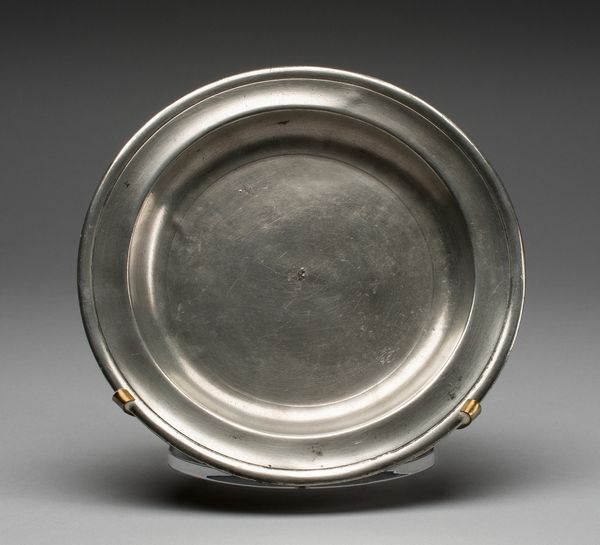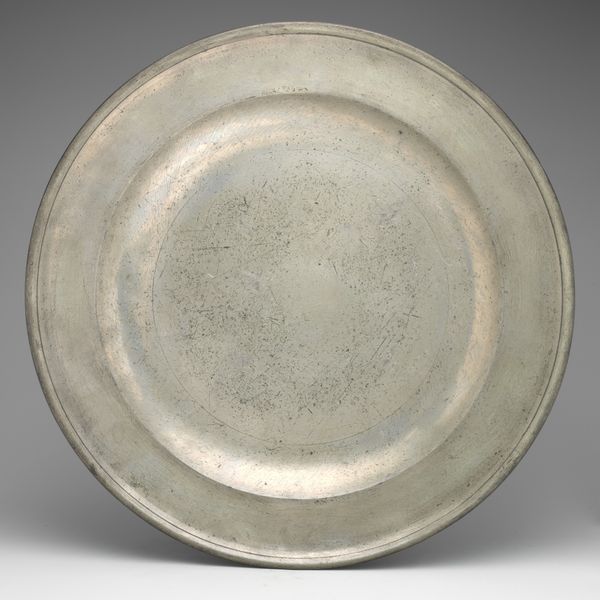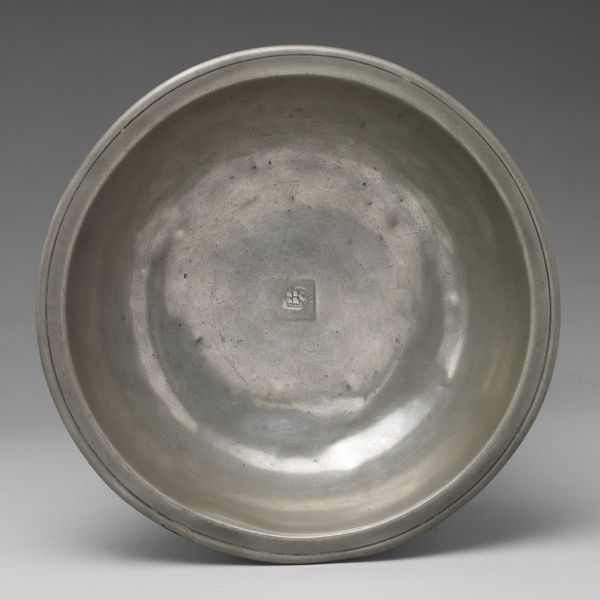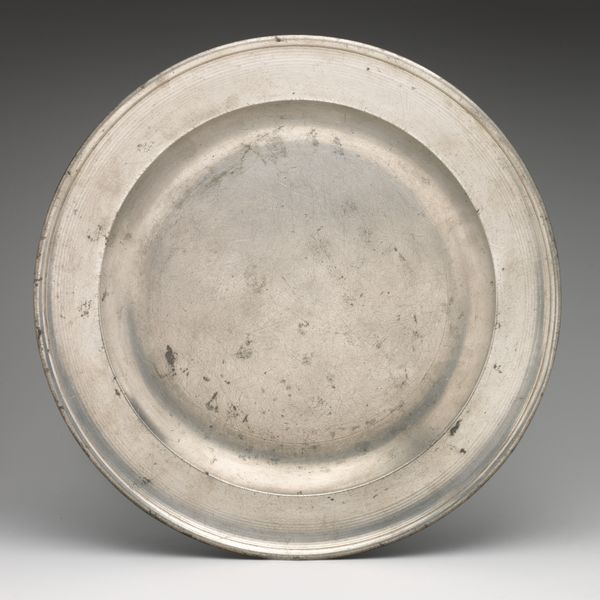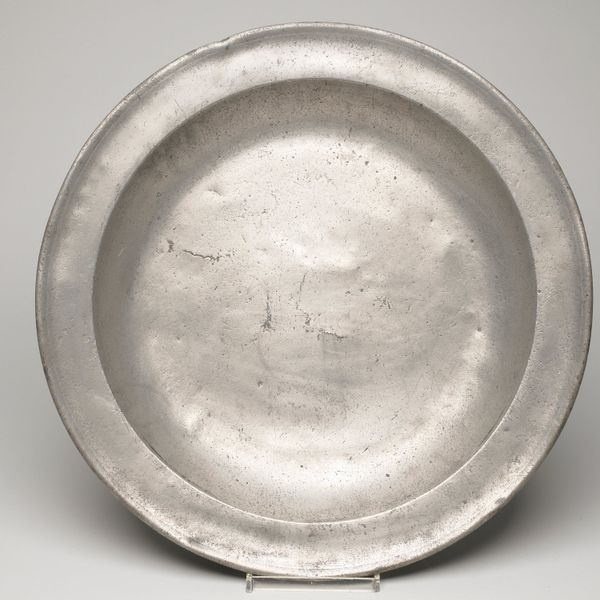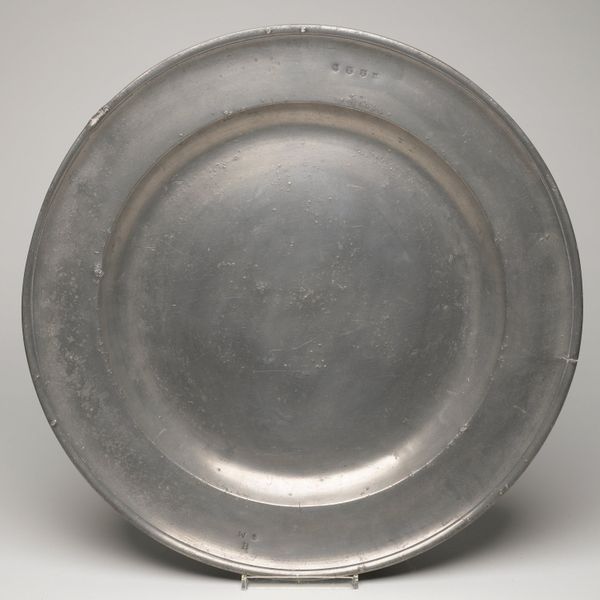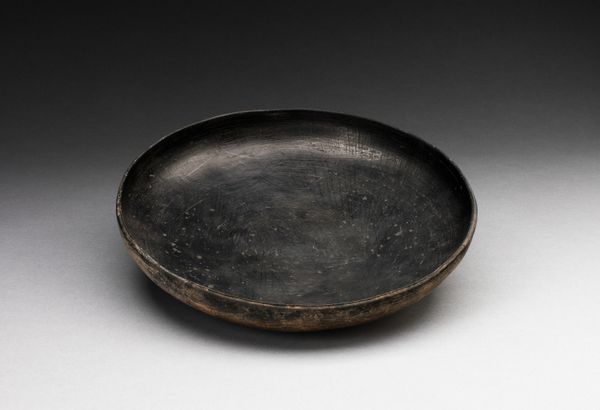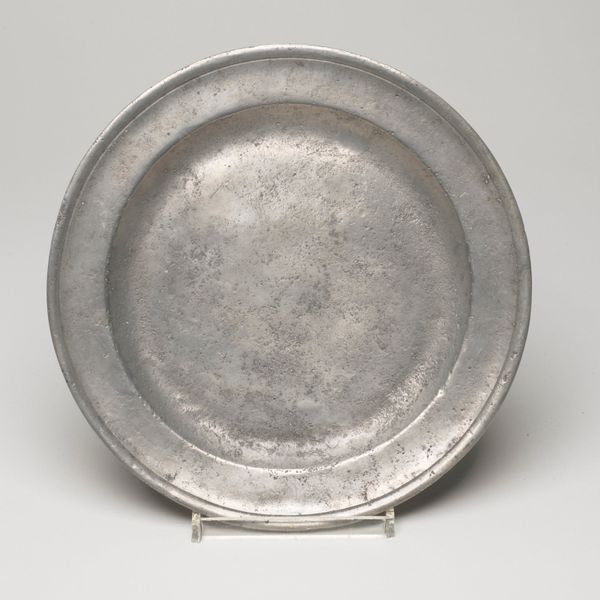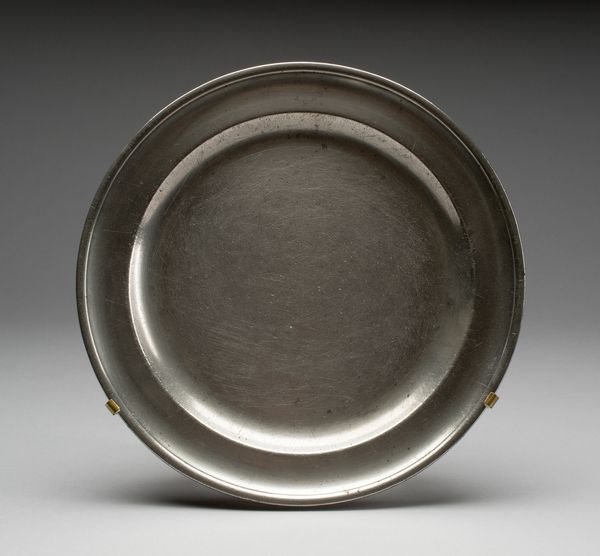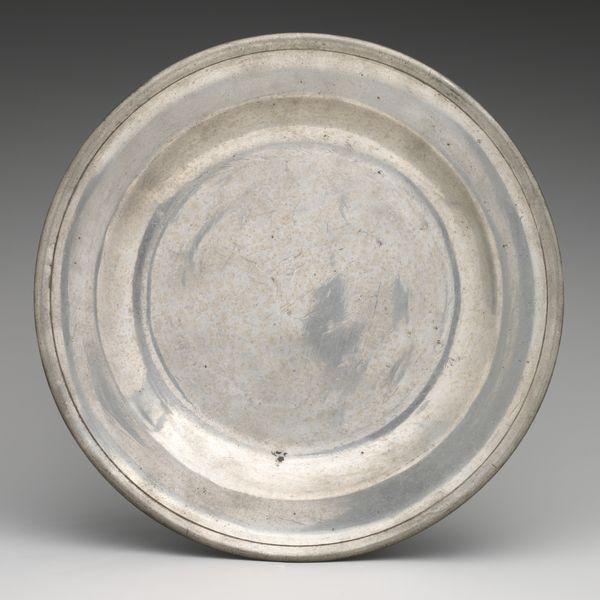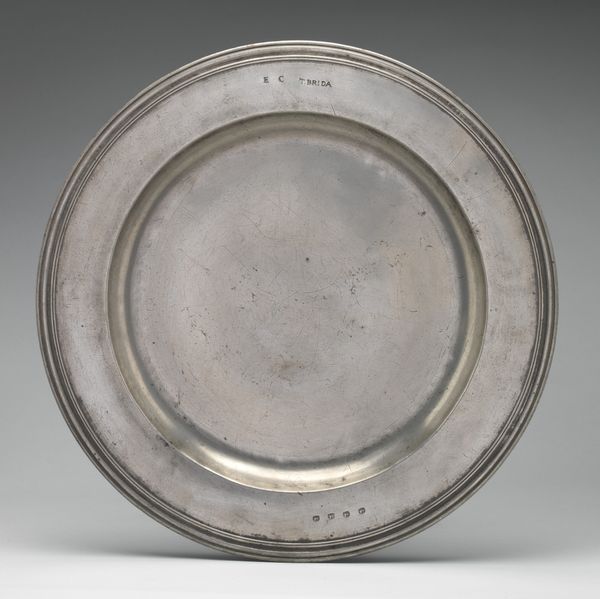
metal, ceramic
#
medieval
#
metal
#
ceramic
#
stoneware
#
ceramic
#
decorative-art
Dimensions: diam. 21.3 cm (8 3/8 in.)
Copyright: Public Domain
Editor: Here we have an anonymous charger, dating from somewhere between 1800 and 1850, crafted from ceramic materials. The overall effect is one of simple utility, but the material itself speaks to me. What stands out to you about it? Curator: Immediately, I’m drawn to the materiality of this charger. Consider the labour involved in its creation – the mining and refinement of the materials, the skill required to shape the ceramic, the firing process… It’s easy to overlook the sheer physicality embedded within an object like this. How do you think its function as a utilitarian object impacts our understanding of it as ‘art’? Editor: That's an interesting point. It feels almost subversive to consider a plate as art. How did objects like this exist in relation to fine art during its time? Was there a distinction, and did that affect the value placed on them? Curator: Absolutely, the distinction was stark. Fine art, particularly painting and sculpture, held a privileged position, often tied to elite patronage and notions of individual genius. This charger, however, speaks to the world of craft and everyday use. Understanding the socio-economic context, the intended consumer, and the means of production reveals a fascinating narrative. Were these mass produced, or individually crafted? That distinction radically alters its value. Editor: I never thought of it like that, it gives such a different perspective to considering how a piece is made and for whom. This was very insightful; I think I'll pay much closer attention to material and context moving forward. Curator: Indeed! Thinking about the 'stuff' of art—its making and its social life—offers compelling insight. It moves us beyond aesthetics alone, revealing a rich tapestry of human action.
Comments
No comments
Be the first to comment and join the conversation on the ultimate creative platform.

